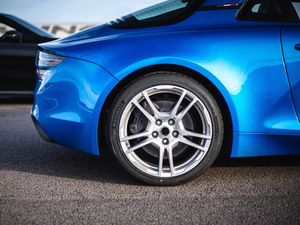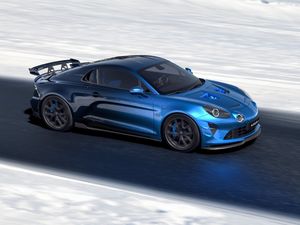Getting behind the wheel of the iconic Unimog
Jack Evans experiences the latest version of the legendary do-it-all vehicle
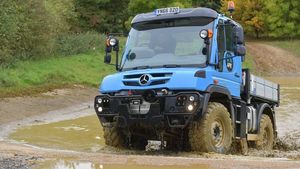
As one of the most iconic names in off-roading, Unimog conjures up instant ideas of go-anywhere travel and rugged all-weather usability. It’s been around for close to 70 years now, and we’ve been granted a go behind the wheel of one of its latest models.
Unimogs are currently used in all manner of sectors, from agriculture all the way to fire and disaster relief. There’s even road-rail versions, capable of driving on train tracks. Cumbria County Council even uses them to help clear high fell routes from snow.
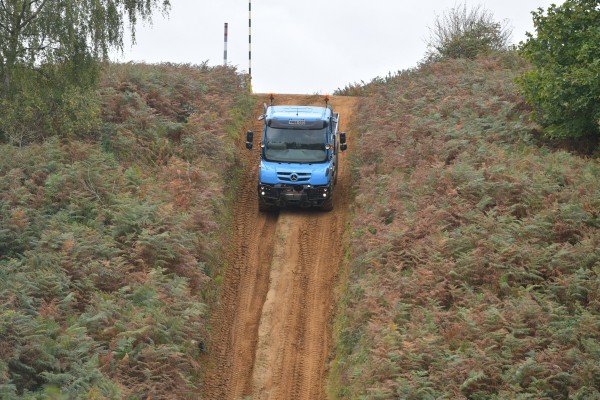
There are two model ranges to choose from – the U4023/U5023 and the U216-U530. The former is the most extreme off-roading version, and offers the best clearance as well as a truly rugged build.
The latter is a specialised implement carrier and professional transport vehicle. That means if you’re wanting to have a cherry picker or crane atop your Unimog, then this is the one to go for.
There are two engines available, a four-cylinder or a six-cylinder. Available in a variety of different power outputs, the maximum torque figure for the six-cylinder is a remarkable 1,200Nm – more than either a Ferrari LaFerrari or a McLaren P1. Of course, its top speed of around 55mph is considerably lower than either of those cars – but the sheer pulling force it has at its disposal is staggering.
But what’s it actually like to drive? Surprisingly simple, actually. The cabin looks like any you’d find in a regular Mercedes van, and all of the major controls appear familiar. However, they aren’t as familiar as you’d expect.
The main ‘gearlever’, for instance, doesn’t control the gears at all. It’s actually a multifunction joystick used when controlling implements attached to the vehicle’s roof. For instance, you can control a hedge trimmer while driving along a carriageway.
Incidentally, when you are trimming hedges or need to be closer to the work area, the entire steering wheel, instrument panel and pedals can be shifted to the left using the vehicle’s Variopilot system.
Where does the gearstick lie then? In fact, it’s mounted to the steering wheel column. It uses a pre-selected gearbox so, to change cogs, you simply pull up on the lever, wait for the corresponding gear to appear on the screen ahead, dip the clutch and – thunk – it changes. It feels a little unnatural to begin with, but you soon get quite used to it.
The sheer amount of torque makes the Unimog easy to drive, as you can leave it in pretty much any gear and it’ll doggedly drag itself through muddy sections and deep water – the Unimog has a maximum wading depth of 1.2 metres. The first version we drove, a U218 model, dealt well with rough sections of track, but because it was unladen had a tendency to send a lot of bumps through to the cabin. We were told that the ride improves with added weight in the rear – something the vast majority of Unimogs will be using.
That said, nearly every surface which would have proved near-impassable in any other vehicle was simply pushed to one side by the Unimog – it truly is remarkable off-road.
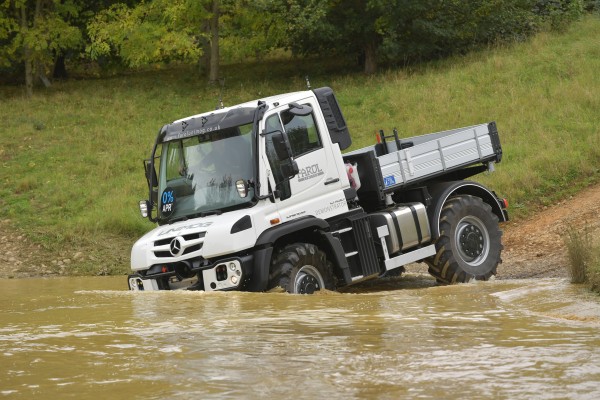
There’s no doubting that the Unimog is expensive – prices can reach in excess of £90,000 – but what you get for that is a huge amount of all-weather capability and, in addition, a lot of flexibility in terms of truck layout too. Low maintenance costs and well-spaced service intervals also help justify that price tag.
The Unimog isn’t a vehicle that you see all that often on the road. However, it’s certainly a crucial part of the utilitarian vehicle sector – and one which looks set to remain for many years to come.



